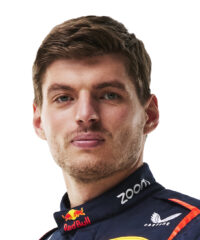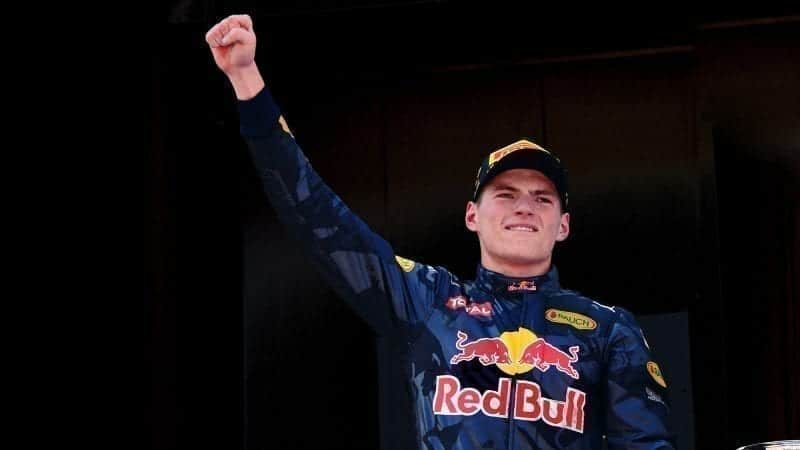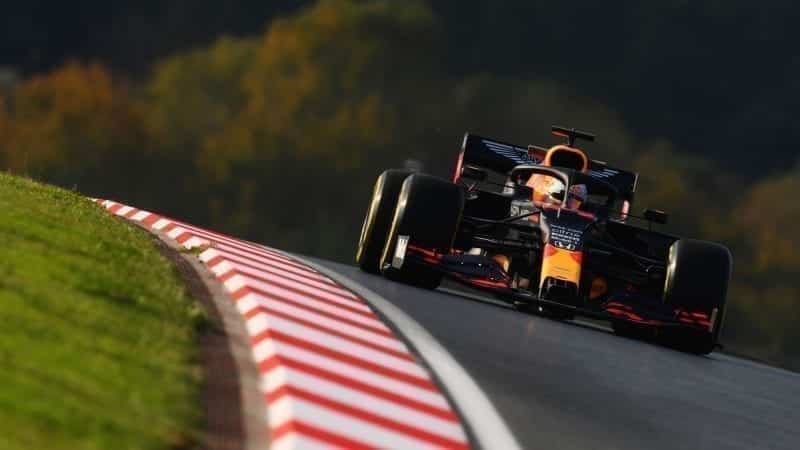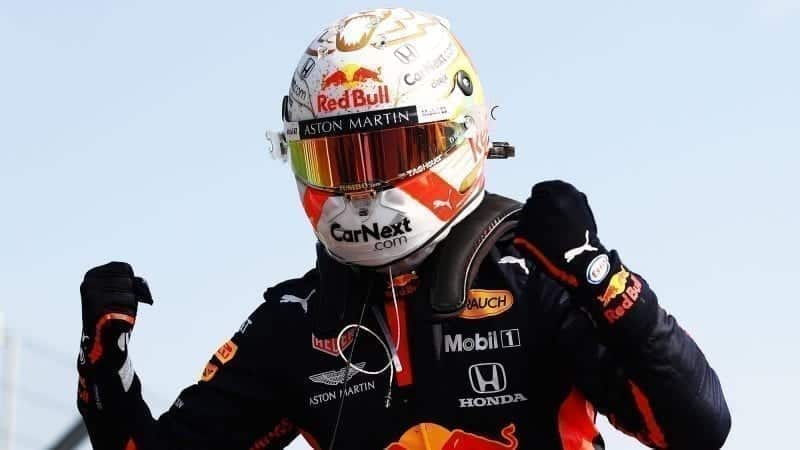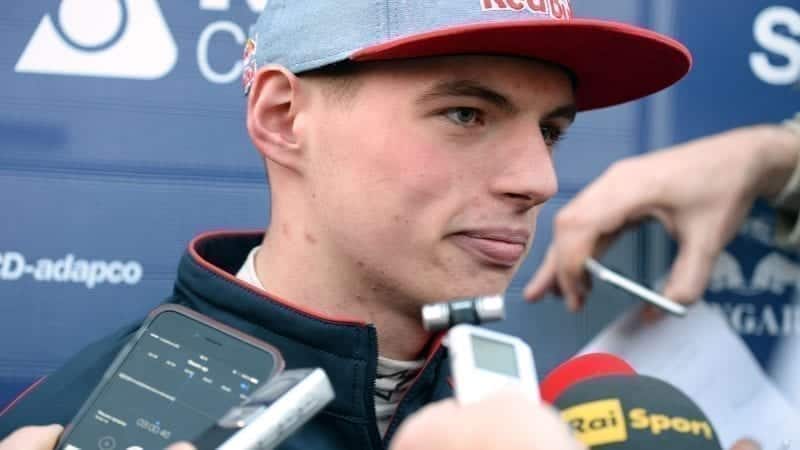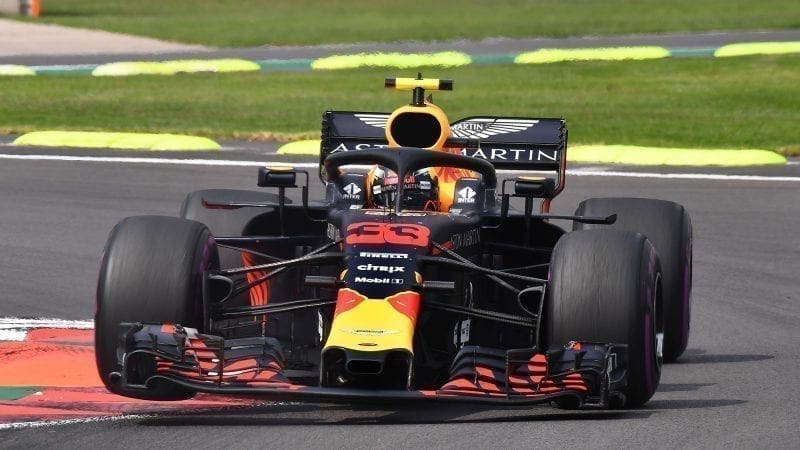Following his first F1 world title with a scarcely believable 15-win season in 2022, Max Verstappen is quickly becoming one of the most statistically impressive drivers in Formula 1 history.
The Dutchman stood out from his very first season in 2015, when he was just 17. He progressed to Red Bull in the middle of 2016 and won his first race with the team, then kept pace with the outstanding Daniel Ricciardo.
With little sign of his early raw and controversial on-track manoeuvres, he now leads Red Bull into 2021 as arguably the most exciting talent of his generation, who now looks to have a chance to fight for the title.
It would be the fulfilment of a joint project with his father, Jos Verstappen whose early career was similar to that of Max. Both were blisteringly quick in karts and both stayed in junior car racing ranks for as short a time as possible. But while his father ultimately did not live up to the hype, the younger Verstappen is forging his legend in F1.
World Karting Champion and a season of Formula 3
The junior Verstappen’s karting career culminated in an exceptional 2013 season – the works CRG driver winning European titles in the KF and KZ classes. He then crowned those achievements by winning the KZ World Championship at Varennes-sur-Allier in France. Those he beat that day included former Toro Rosso F1 driver Jaime Alguersuari. Barely 16 years old, Verstappen tested both Formula Renault 2.0 and Formula 3 cars during the winter before deciding on the latter for his car racing debut.
Driving a Van Amersfoort Racing Dallara F314-Volkswagen in the 2014 European F3 Championship, he scored his first victory during its second weekend at Hockenheim. He then won all three races at successive weekends at Spa-Francorchamps and the Norisring as he chased fellow rookie Esteban Ocon for the title. Further victories in the Zandvoort Masters and at the Nürburgring had F1 taking note. Eventually runner-up behind the Frenchman, Verstappen joined Red Bull’s junior driver programme in August and was confirmed as a 2015 Scuderia Toro Rosso race driver just weeks later.
The youngest Formula 1 driver in history
The 17-year-old replaced Alguersuari as the youngest driver to start a GP when he made his debut in Australia at the start of 2015. It is a record that is likely to stand the test of time for the FIA had already decided that from 2016, drivers must be at least 18 before racing in F1. There were the inevitable errors of youth, most notably at Monaco, but Verstappen’s talent was plain for all to see. A fearless over taker, he qualified sixth and scored points in his second race (Malaysia) before finishing fourth in Hungary and the United States. Verstappen was named as the FIA’s Rookie of the Year after finishing 12th in the final standings.
Grand Prix winner for Red Bull Racing
He began 2016 with Toro Rosso and scored points in the first three races of the year. Such was his form that Verstappen was promoted to Red Bull Racing for the Spanish GP and he responded by nursing his tyres to the finish to become the youngest F1 winner in history. There were days when he overstepped the mark – must notably his defensive tactics at Spa and Suzuka – that earned the nickname “Mad Max” among his peers. But there were other races when he was simply sensational, especially in the wet. He finished second on four occasions and his exhilarating charge to third in Brazil drew comparisons with the likes of Ayrton Senna.
As forceful as ever, Verstappen maintained his impressive speed into 2017. However, repeated retirements included being the unwitting victim when the Ferraris collided at the start in Singapore and restricted the increasingly frustrated Dutchman to sixth overall. That said, he passed a cautious Lewis Hamilton to win in Malaysia and then dominated the Mexican GP. Verstappen out-qualified Daniel Ricciardo 13-7 as he reinforced his reputation with Red Bull.
Red Bull team leader
His place as Red Bull’s lead driver was confirmed during 2018, to the point that Ricciardo decided to leave at the end of the year. Verstappen responded to a difficult start to the year that included losing potential race wins in China and Monaco, by scoring his fourth GP victory in Austria on Red Bull’s home circuit. A second win followed in Mexico but he was knocked out of the lead in Brazil when Force India’s Esteban Ocon tried to un-lap himself. Verstappen scored 11 podium finishes as he claimed fourth in the World Championship.
Red Bull switched to Honda engines for the 2019 season and Verstappen delivered the new partnership’s first podium finish at the opening round in Australia. Initially slower than the new Mercedes and Ferrari, the Red Bull RB15-Honda grew more competitive as new upgrades became available. Consistency was added to his blistering pace and Verstappen finished in the top five at every race before the summer break. That run included another victory at the Red Bull Ring (Honda’s first since its comeback) and at Hockenheim.
He qualified on pole position for the first time in his F1 career at the Hungaroring but was beaten into second when Hamilton made an extra pitstop. A penalty in Mexico cost him pole and another possible victory, but he converted his second pole position at Interlagos into his third victory thanks to passing Hamilton twice on the track. Having overshadowed his team-mates all year, Verstappen beat both Ferrari drivers to finish third overall after another impressive campaign.
After criticism earlier in his career of an over-exuberance in wheel-to-wheel combat, the Dutchman put together his most mature performances in 2020 in his relatively young career. Verstappen failed to finish on the podium when making it to the chequered flag on just one occassion, missing out in Turkey after an error trying to pass Sergio Perez in the tricky wet conditions. He capped off an ultimately disappointing season unable to challenge for the title with an impressive victory in Abu Dhabi. Red Bull beat Mercedes on pure pace, but it remains to be seen if the team can challenge for a championship in 2021.
Championship season
Red Bull finally produced a car capable of fighting for the world title in 2021, taking advantage of the changes to the rules around the floors of cars to make the most of its high-rake design philosophy.
Quickly it emerged that the fight for the championship would be between reigning champion Lewis Hamilton and Verstappen, with the duo trading wins back and forth throughout the year. After several near misses earlier in the season, the two title protagonists finally came to blows during the British GP, with Hamilton and Verstappen making contact with the Red Bull driver sending him into the barriers at 51G. Hamilton survived to continue on to win but the Dutchman hit back to secure two wins in the following three rounds.
Several more flashpoints occured between the title protagonists, including a double DNF at Monza following further contact, controversial defensive moves during the Brazilian and Saudi Arabian Grands Prix from Verstappen as Hamilton clawed his way back to level-pegging heading into the final race of the year.
Once more, there was controversy as Hamilton surged into the lead from the start on mediums, leaving Verstappen to lunge back on his softs to steal the lead but forcing Hamilton off track in the process. Hamilton kept the lead and looked set for the title up until Nicholas Latifi crashed just a handful of laps prior to the chequered flag. Red Bull pitted Verstappen from P2 but would the race restart in time?
The safety car was unprecedentedly withdrawn after race director Michael Masi removed the lapped cars between the Red Bull and Mercedes to set up a one-lap shoot-out for the win and championship. On fresh tyres, there was only one winner as the Dutch driver dived down the inside to pass Hamilton, going on to cross the line as the first ever Dutch F1 world champion, potential finally realised.
Back-to-back
A cloud of uncertainty hovered over the F1 paddock ahead of the 2022 season, with new technical regulations handing new challenges to teams and their drivers. But despite a start plagued with mechanical failures, once Verstappen discovered his groove, he became almost unbeatable.
The Dutchman found an early title rival in Charles Leclerc, who won two of the first three races of the season – securing a 46-point advantage in the drivers’ standings. Wheel-to-wheel duels in Bahrain and Saudi Arabia gave fans a taste of what could have been, but poor reliability and head-scratching strategy calls soon put Ferrari out of the title hunt.
But make no mistake, Verstappen’s latest world title wasn’t handed to him on a silver platter. On numerous occasions, he was forced to fight through the field, with his most impressive charge taking place at the Belgian Grand Prix – starting in P14, taking the lead of the race on lap 12, and going on to win by 17 second margin.
Another commanding drive around a rain-soaked Suzuka meant Verstappen was able to wrap up his second consecutive world title five races early, in a season surrounded by the sound of broken records.
